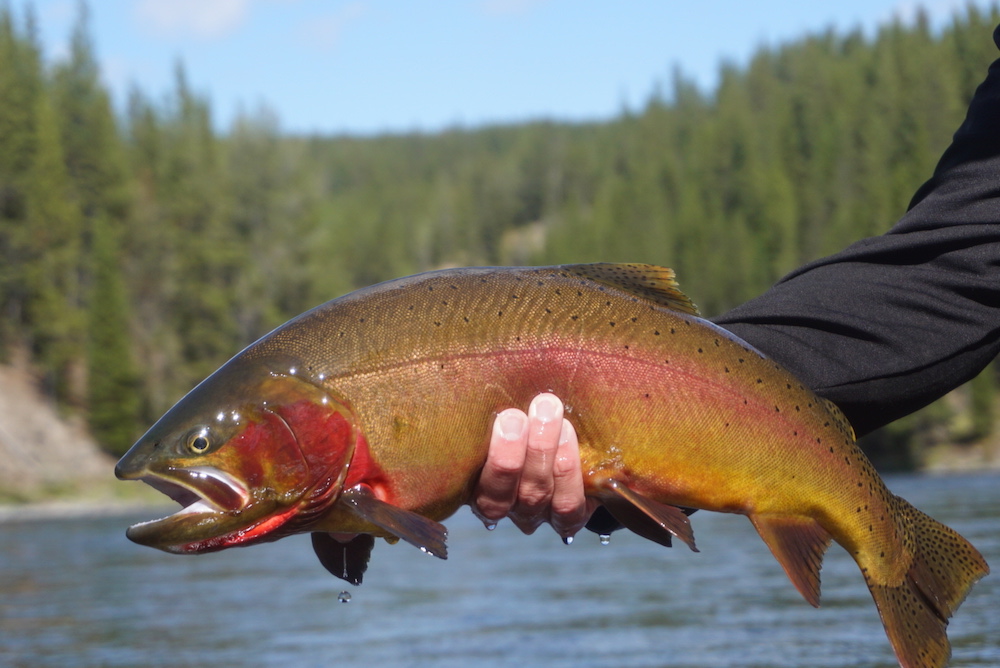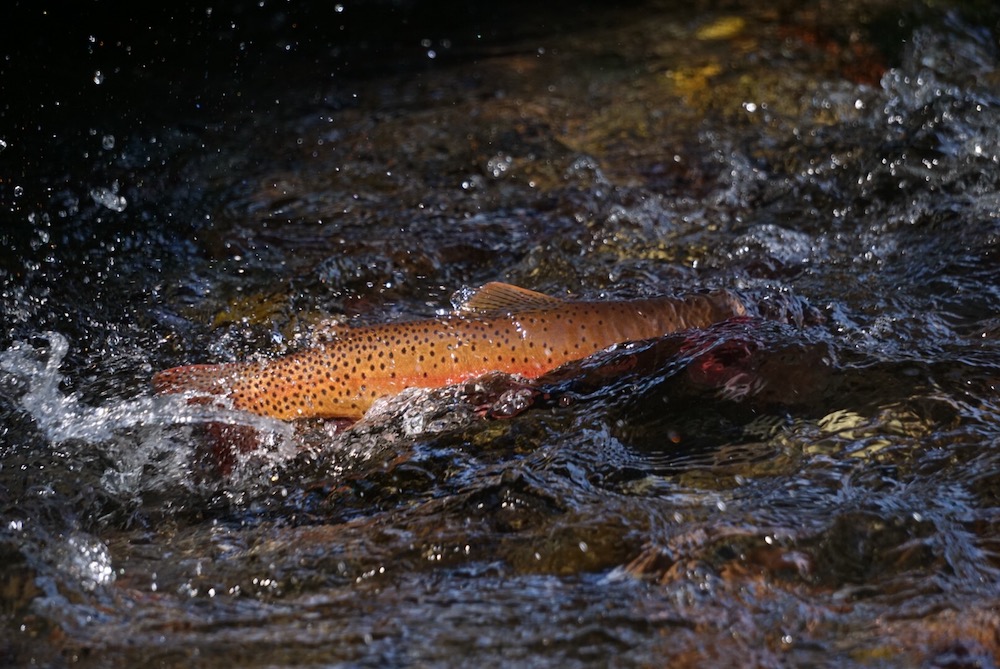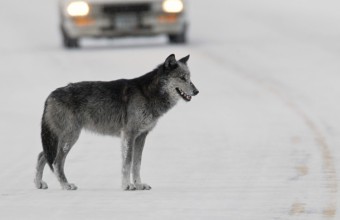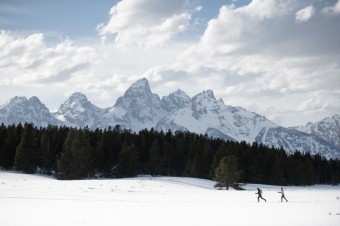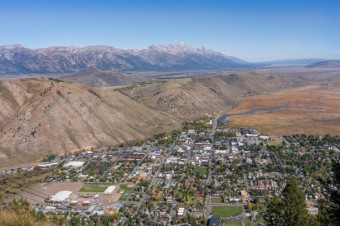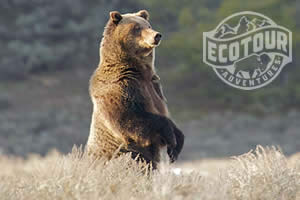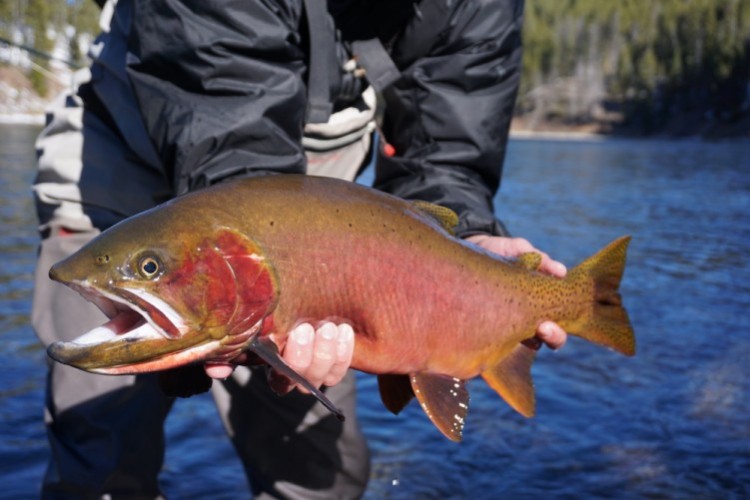
Yellowstone cutthroat trout can reach impressive sizes near Yellowstone Lake
Yellowstone National Park is big, 2.2 million acres to be exact. Set aside by congress as the first National Park in 1872, its fisheries and beauty have remained largely unspoiled. While YNP is known for its abundant wildlife and sprawling geyser basins, it lies at the heart of some of the best trout fishing in North America, offering anglers unmatched opportunity. In part one of this series we discussed DIY Flyfishing in Grand Teton National Park, in Part Two we we will examine a few areas worth exploring in Yellowstone National Park, first in the southern portion, then working our way up to the Northern Range.
Navigating Yellowstone National Park
First it is important to understand how the park is structured. The park roads form a “figure 8”, which divides the park into its upper and lower loops. You can access these loops through Wyoming and Montana through five different entrances. Driving the lower loop you will notice miles of river as well as Yellowstone Lake. Driving the upper loop you will find famed rivers such as the Lamar and Yellowsone. Knowing where to stop and explore will make all difference.
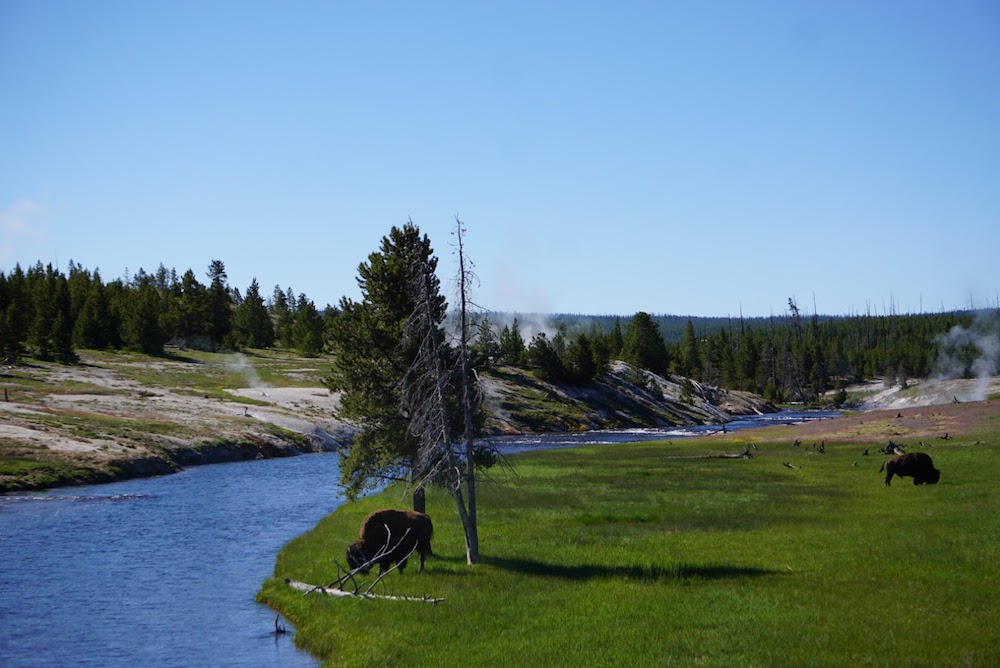
Bison graze along the Firehole River in Yellowstone National Park.
The Lower Loop of Yellowstone
If you want to get an early jump on the fishing season in Yellowstone National Park you should start by looking at the Firehole River. Fed by numerous hot springs and geysers the Firehole River got its name from curious beaver trappers who noted that the river steamed as though it was on fire. This river tends to fish well in May and June as the snow melts out most quickly here. As the summer progresses and water temperatures increase the trout inhabiting these waters will become more lethargic and less likely to bite. This famous and storied river for serious destination fly fisherman is unmatched in its unique abundance of bison and geothermal basins. Please note that this river is susceptible to closure in the later summer months due to warming water temperatures.
Later in the summer, July 15th, the Yellowstone River opens for fishing. Anglers will travel from around the globe to reach these premiere waters. The Yellowstone River flows north from Yellowstone lake holding lake sized fish in its riffles, pools and cut-banks. The fish holding in these waters are the Yellowstone cutthroat trout, wild and willing to eat. Accessing this river is easiest between LeHardy Rapids and Mud Volcano. Upon reaching this stretch of river you may find an abundance of insect life. In July you may still find salmon flies, caddis and mayflies. Oftentimes drifting large nymphs imitating these bugs through deeper trenches and pools will yield good results.
Yellowstone Cutthroat on the Yellowstone River
The Upper Loop of Yellowstone
The Lamar River is one of the most beautiful rivers in the park as it flows through the Lamar Valley. This lush valley, often referred to as the North American Serengeti, is home to an array of wildlife including bison, pronghorn, wolves, grizzlies and much more. Because this river originates high in the Absaroka Mountain range, it is fed by melting snow into July. Do not expect this water to be running calm and clear until mid summer. Throughout late July and August cutthroat and rainbow trout will be rising to a variety of terrestrial patterns imitating grasshoppers and crickets. Generally the Lamar river is only a short walk from the road so it is easily accessible. Try fishing where the Soda Butte Creek meets the Lamar River at the eastern edge of the Lamar Valley. Around this confluence anglers will find a multitude of wadable braids of small water and a plethora of trout feeding on terrestrial insects.
For anglers more inclined to challenge themselves, look towards Slough Creek just west of Lamar Valley. Divided into four meadows, first, second, third and fourth, Slough Creek offers some unique opportunities. While the first meadow lies about 2.5 miles from the trail head, the others would require an overnight stay and a backcountry permit. One thing to keep in mind is that the further you hike from the trailhead, the less fishing pressure there will be on the water. Cutthroat and cutbow trout are wily, so a tactical approach and 5x tippet is the norm. Slough Creek usually becomes fishable around July 4th and will last through September. During the summer months expect to see mayfly hatches and hoppers.
Smaller creeks and rivers in Yellowstone may hold surprisingly large fish!
Gear to Bring
The four most essential items to have with you while spending time flyfishing in Yellowstone National Park are bear spray, warm layers, water, and food. These are three things that might save your life. While bear attacks are uncommon in YNP, seeing a bear is not. So make sure it is always accessible, just in case (learn more about safety in carnivore country here). I recommend carrying bear spray where you can deploy it without taking it out of the holster, such as attached to your belt or a chest fishing harness.
In Wyoming, it is always a good idea to bring layers. Remember, in YNP you are at high elevation, so weather can change dramatically and cold temperatures can arrive quickly. Always make sure to have a rain jacket and a warm layer. Avoid cotton when thinking about what to wear/pack. Cotton will take a long time to dry if wet and will not keep you warm. Another must-have item is a full water bottle, or two. The high elevation and dryness of this climate will dehydrate you quickly.
Licenses and Regulations for Flyfishing in Yellowstone
Yellowstone National Park is managed as a natural area to protect plants, wildlife, geology, and scenery. Angling has been a major visitor activity for over a century. Present regulations reflect the park’s primary purposes of resource protection and visitor use. The objectives of the fishing program are to manage aquatic resources as an essential component of the ecosystem and to preserve and restore native fish and their genetic integrity. Lastly the park would like to provide recreational fishing opportunities to park visitors in a way that is consistent with the previously mentioned objectives.
If you plan on fishing in Yellowstone National Park you will need to purchase a permit. Please note that this is separate from a Wyoming fishing license. A permit can be purchased for the season at $40, a week at $25 or three days at $18. Anyone under the age of 16 will not require a permit. You can purchase these permits at a number of places within the park including visitor centers, ranger stations and Yellowstone Park General Stores. It is very important that you check the latest regulations, seasonal openings and closures as all waters in YNP and are entitled to their individual management strategies. If you plan on camping in the backcountry be sure to reserve a campsite at a visitor center in the park or apply for a permit if necessary.
Why Fishing is Conservation
Fishermen and hunters are some of the original conservationists. These people have, and will continue, to advocate for the protection of public lands, environmental laws and regulations that help sustain their passions. By encouraging more folks to get out and enjoy their local waters, it is possible to cultivate more conservationists, more people that will advocate for the protection of their resources. In many ecosystems trout are a Keystone species, meaning that they are a vital piece of the puzzle. The removal of such a species would change an ecosystem drastically. When we advocate for healthy waters and fish populations, the entire ecosystem will benefit.
One of the biggest threats that Yellowstone National Park faces are invasive species. Park rangers and volunteers have been working tirelessly since the early 1990’s to protect these native trout from extinction. In my next blog we will learn more about Yellowstone cutthroat trout, the threat they face from lake trout, and what Yellowstone National Park is doing about it.
EcoTour Adventures Guide Kirk Ryder, originally from Massachusetts, developed an intense curiosity and interest in the outdoors spending his summers in the Berkshire Mountains. His college years lead him through the Adirondacks to St. Lawrence University where he studied environmental science, government and served as vice president to the Hunting and Fishing Club. During these college summers Kirk made his first visit to Wyoming, fallingin love with the Greater Yellowstone Ecosystem. Now situated in Jackson, Kirk spends his free time backcountry skiing, hiking, fishing and rafting. Kirk’s excitement for outdoor education and sharing it with others is a terrific combination as he seeks to inspire others to better understand the natural world and what it means to be a part of the GYE.


